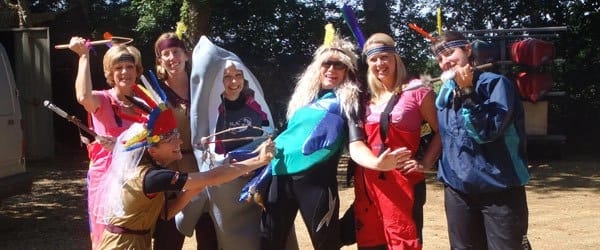Weird and wonderful Stag and Hen Traditions!!
28 March 2017

Stag and Hen Parties as we know them, have only been common since the 1970’s but the Traditions of celebrating the Bride and Groom before the wedding is actually much older.
Stag Party’s date back as far as the 5th Century BC where Spartans would celebrate with a feast and toasts to the Groom and his last night as a single man. The term Stag Party comes from the English Celts and their Mythology, of anything with horns representing everything male. ‘Stagga’ meaning a Stag is where the term was first seen in 12th Century England. Old Nordic examples of this idea are also present, with their use of Male Fox’s, Tomcats and Dragon's. ‘Stag Party’ is actually English/American slang from 1848, for their name of the Celebration. In Australia, the celebration is known as a ‘Buck Party’.
Whether you've chosen a small intimate wedding, or are jetting off to an exotic wedding destination, the activities in aStag Party have not changed much over the years, with the encouragement of large amounts of food and Alcohol, with exclusively Male family members and friends to celebrate his last night as a Single man.
Hen Parties have actually changed a lot over the years and have many different versions around the world. Then term Hen party comes from the Germanic word ‘Huhn’, which means a woman and it was changed to English slang version in the 14th Century. It refers to a female bird of any species. The Term ‘Hen Party’ has been used since the 1620’s in this slang form.
The first example of a Hen party actually dates back as far as Ancient Greece. The 1st event of the wedding called the ‘Proaulia’. It would take place in the father of the Brides house, were the Bride and her mother with other female relatives, friends and slaves would prepare her for the marriage. They would give offerings to the Gods Artemis, including a lock of the Brides' hair. Artemis is the Goddess of Virgins and Childbirth. The offerings are to thank for protection as a young girl and further support, for the loss of that make her a girl and support in becoming a woman and threw childbirth. The lock of hair would be dedicated to the Goddess to ask for this.
In Scotland, there is the tradition called the ‘Blackening of the Bride’. This is when the Bride is sat on the back of a truck and is covered in a mixture of flour, eggs, treacle and feathers. They would take turns to throw the mixture onto her. Then she is paraded around the town in celebration, including into the Pubs and Bars until the bride is allowed to go home and shower. This practice is still done today as a big part of the Hen Party.
In France, their term for a stag and hen party is called ‘the burial of the young Man/Maiden’.
In Germany, they celebrate with ‘Polterabend’ meaning ‘Smashed’. This refers to the smashing of Porcelain objects to bring good luck in the new marriage. This comes from a practice when they would smash pottery versions of evil spirits, including 'envy' in particular, to scare them away from the couple. This practice is still done today in traditional German Weddings.
So whether any of these traditions catch your fancy, it is safe to say the Stag and Hen party tradition is a big part of 'marriage culture'. So celebrate yourselves and have a great time doing whatever you want on your last night of being single and free!!
